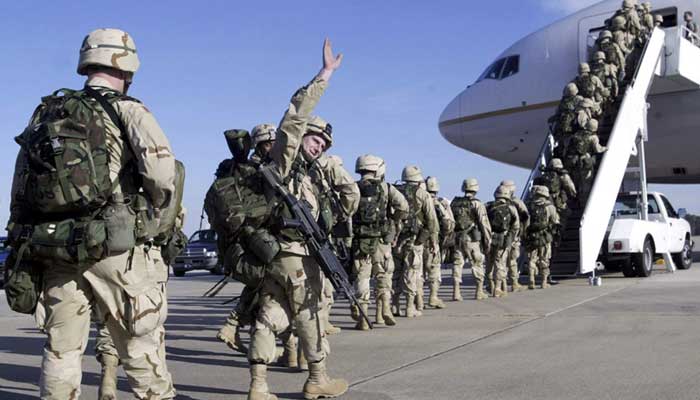ISLAMABAD ( Web News )
What are the current challenges in Afghanistan’s peace process, particularly with a complete US withdrawal on the horizon by September 2021, and will the Afghan government be able to secure civil rights for all its citizens? Jinnah Institute President Sherry Rehman, and former Foreign Secretaries Riaz Mohammad Khan and Najmuddin Shaikh weigh in on the developing situation in the region, with a focus on Pakistan’s security interests, on prospects for a ‘lasting peace agreement’ between Kabul and the Afghan Taliban.
Senator Sherry Rehman
President, Jinnah Institute

The killing of at least 90 innocent people in the heinous attack on Sayed ul Shuhada school in Kabul, most of whom were young girls from the Shia Hazara community, confirmed that peace will remain elusive for Afghanistan’s minorities, despite political settlements between the Taliban and other negotiating factions. Although nobody stepped forward to claim responsibility for the attack—the Taliban condemned it—trends indicate that the Shia community has faced vengeful attacks by ISIS ever since the peace process gathered pace. The ISIS’ bombing of a maternity hospital in the same Dasht-e-Barchi district in May last year, as well as an educational facility in October targeting Hazaras shows that ISIS goes for the softest civilian targets and will continue to operate with impunity. It also demonstrates the capacity of spoilers to overwhelm the peace process, and draw all sides into endless, debilitating combat.
With the US exit deadline drawing nearer by the day, there are real fears that fighting will continue to intensify as more international troops leave Afghanistan. This fallout will be experienced in Pakistan’s territory as well, as a result of potentially displaced communities and violence in the major cities of Pakistan. The Taliban’s war next door is easily taken up by radical groups on this side, like the TTP, whose allegiance has always rested with the Taliban leadership and mandate. Pakistan must anticipate the spillover of violence from Afghanistan and consider the humanitarian aspects of a war next door.
Our economies are integrated in several ways, but food supply chains form the most critical link between Pakistan and Afghanistan, especially the production and supply of wheat. In the event of a war, or as we saw in the COVID pandemic, supply chains are badly disrupted and propound vulnerabilities downstream. Our decision makers must look for opportunities to support Afghanistan’s people and increase our aid assistance in their interest.
Riaz Mohammad Khan
Former Foreign Secretary

The twists and turns in the Afghan situation make its denouement difficult to predict. Going by history, the fact that the Najibullah government survived against all odds for three years after Soviet withdrawal, or that isolation of Afghanistan alone allowed the Taliban exceptional manoeuvrability to take over Kabul in 1996, a Taliban victory over Kabul following the US exit cannot be taken for granted. The Afghan National Army may well be able to defend Kabul as its turf. On the other hand, progress towards intra-Afghan dialogue faces formidable obstacles. The Taliban refuse to engage with Ashraf Ghani. Other intractable issues include the constitution (Islamic Republic versus Islamic Emirate), the shape of power sharing, the future of Afghan security forces and the lingering question of gender and minority rights. Most observers anticipate violence to escalate.
There is room for optimism if four factors combine to generate positive momentum. The Taliban seem amenable to the idea of an interim government and have reportedly reached out to Abdullah Abdullah and others; second, there are significant political factions in Kabul other than the government and the Taliban; third, willingness of outside players in particular the US, Russia and Pakistan to exert themselves for peace and discourage violence; and the promise of substantive international economic support. Meanwhile, Pakistan must stay away from the military dynamics of Afghanistan.
Najmuddin Shaikh
Former Foreign Secretary

An outbreak of hostilities is inevitable. The ANDSF, while theoretically more than 300,000 strong has only a Commando unit that is combat ready and efficient in its anti-insurgency operations, but it too is dependent on air support from American forces. The Afghan Air Force possesses helicopters and fixed wing aircraft, but does not have the capacity to maintain them and will lose flying capacity within weeks of the American exodus.
Opium, the only substantial crop in Afghanistan yields revenues at the cultivation stage largely for the Taliban but the income generated by the more lucrative refining and trafficking industry is shared by the Taliban, corrupt officials and local warlords who, through their fiefdoms, control trafficking routes. The Taliban will have a war on their hands for this and because 31 percent of the population (the Tajiks Hazaras and Shias, Uzbeks) will not accept Taliban domination nor will the Pukhtuns opposed to the Taliban. None have a shortage of the sort of arms this sort of strife will require.
Pakistan must complete the fencing of its border, ask the Taliban leaders to move into Afghanistan to negotiate with other Afghan parties and to the extent possible insulate itself from the chaos that is bound to engulf Afghanistan.

